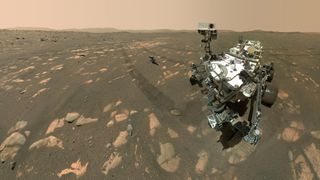Space travel has evolved enormously over the past quarter century, from government exploration missions to a dynamic, more commercially driven frontier.
In 1999, there were 79 orbital launch attempts, including intercontinental ballistic missiles (intercontinental ballistic missile) tests. Many missions have been carried out by the venerable spaceshipDelta and Soyuz rockets, with the United States and Russia leading the way. International Space Station (ISS) was in its early days of construction, with NASA leading a number of countries in building the largest of all international cooperative projects.
The scene has changed radically. Technological advances, transformative and autonomous software, and emerging blocs of international cooperation have given rise to a new and dynamic, but more crowded and even contested, arena. low earth orbit (LEO) and beyond.
See more 25th anniversary features:
Check out the list of special stories from Space.com’s 25th anniversary week in our hub linked here!
The first one Falcon 9 The launch took place in 2010, with the first successful landing of the first stage taking place in late 2015. Reusable SpaceX Falcon rockets take off, land and are prepared for reuse. There was 98 Falcon launches in 2023 alone, out of a total of 223 launches attempted to dominate the global launch market.
Related: 8 Ways SpaceX Transformed Spaceflight
Jonathan McDowell, an astrophysicist at the Harvard-Smithsonian Center and spaceflight specialist, points to a key development in space travel in recent times: software.
Advances in software have enabled huge breakthroughs, such as sophisticated algorithms for landing Falcon rockets on drones and landing pads, and autonomous navigation of NASA aircraft. Curiosity And Perseverance rovers on Mars.

The new software also enables detailed mission simulations, astronaut training, improved communication with remote spacecraft, high-fidelity simulations of space environments, and human-machine interaction for safer and more intuitive operations.
Back to the launch arena: Europe, China, Russia, Iran, Israel, Japan, India, and North and South Korea have all contributed to making 2023 the busiest year for launches globally so far. Others, including Britain, Germany, and Spain, are aiming for commercial orbital flights. rockets Soon.
China came in second on the list. China has emerged as a leading space nation over the past decade, with a national record of 67 launches last year. It has sent landers and sample-return missions to the moonput a rover on Mars and built the Tiangong Space Stationproviding a new orbital outpost for astronauts. The new station will likely attract new partners, especially as the ISS heads toward decommissioning around 2030.
China also wants to build megaconstellations like SpaceX’s Star Link in LEO for communications and more — meaning that competition for orbital planes and radio frequency use is likely in the offing. Such projects are indicative of a complex situation in space.
Victoria Samson, chief space security and stability officer for the nonprofit Secure World Foundation, notes how much low-Earth orbit has already changed.
“Space travel today takes place in a much more complex environment than it did 25 years ago, due to the increasing number of players, the rise of very large constellations, and three major debris-producing incidents.” These are the collision between the Iridium satellite and the Cosmos satellite in 2009, the Chinese anti-satellite (ASAT) test in 2007, and ASAT 2021 Test in Russia.
The presence of ever larger constellations — not to mention space debris — will also require careful calculations regarding the timing and trajectory of launches.
Related: Kessler Syndrome and the Space Debris Problem
On a more positive note, the last quarter century has proven that countries can work together.
“I think the ISS has proven that the international community can work together on science projects in space and that humans can stay in space for (relatively) long periods of time,” Samson said. “Now it’s time to take the lessons from this experience and apply them to the next 25 years in space.”
“We now have reusable launch vehicles, which is a game changer,” she added. Many companies in the United States, China and elsewhere are trying to follow SpaceX’s lead.
25 years ago: In 1999, NASA’s Mars Polar Lander took off for the red planet. This mission ended with a hard landingBut there are now teams on Earth that are adapting their schedules to the Martian day, using huge nuclear-powered rovers. There is also a renewed interest in the Moon, with a flotilla of missions planned, mainly under the aegis of NASA Artemis Programwhile the China-led International Lunar Research Station (ILRS) is also taking shape.
While the Mars Polar Lander was launched on a Delta II now retired rocket, one of the flagship missions of recent years, Europa Clippershould be launched on a commercial platform Heavy Falcon rocket later this year. Other major developments include James Webb Space Telescope (JWST) providing new and deeper insights into the universe than The Hubble Telescopeand the proliferation of cubesats and small satellites—miniature but high-performance satellites that have, to some extent, democratized access to space.
One of the most exciting, captivating and illustrative recent developments in space travel—demonstrating not just advances, but ambition and vision—is SpatialshipSpaceX’s latest effort to revolutionize space travel through total reusability, low cost, and high payload capacity. Thirty-three high-thrust, methane-fired Raptor engines power Starship’s Super Heavy first-stage booster, propelling the upper stage toward orbit. The stainless-steel rocket is the largest and most powerful launch vehicle ever flown, and its ongoing test flights are drawing worldwide attention.
Nearly a quarter of the new century has passed and the space industry is at a point where countries are forming coalitions to explore and even maintain manned habitats on the Moon, with commercial companies determined to set up shop there. March and countless companies looking to transform the space with innovative ideas.